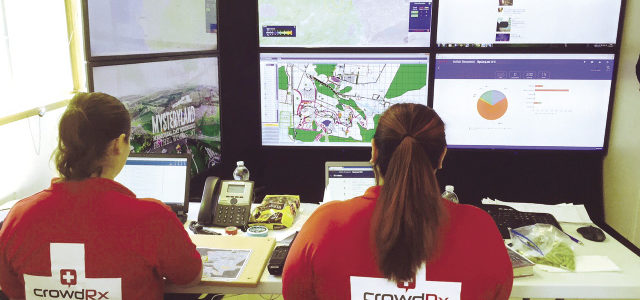NFPA Festival Medicine: Life of the Party
Safe spaces, mental health services, drug checking facilities. Welcome to the brave new world of harm reduction, the latest life safety tool of the booming global festival industry.
BY JESSE ROMAN
It wasn’t always that way, according to Andrew Bazos, a surgeon who started working at large music festivals in New York City in the early 1990s. Back then, promoters were obsessed with lineups, sound production, and security—medical concerns were often an afterthought, he said. “In those days the promoter would call up a local ambulance company and arbitrarily ask amateurs to come by, find a tent near the stage, and bring whatever supplies they deemed appropriate. It didn’t go much further than that,” he said.
Bazos is now the chairman of CrowdRx, one of the industry’s largest event medical providers. Last year, CrowdRx handled medical services for dozens of eclectic events, including Burning Man, the US Open, The Gorge Amphitheatre, Madison Square Garden, and several EDM festivals including Mysteryland and Electric Zoo. Each event presents a host of unique challenges and considerations, Bazos said, and medical planning goes well beyond grabbing a roll of gauze and hitting the road. “Data now drives everything we do,” he said. “We’re using data to both predict the volume and types of incidents we’ll see so we can be prepared on the supply side. At this point we can identify what the transport rate [to the hospital] will likely be based on four or five different key data points.” Variables such as music genre, whether camping is allowed, whether alcohol will be sold, the expected number and demographics of attendees, geographic location, and proximity to hospitals can all greatly alter the supplies, equipment, and staffing required for an event, Bazos said.
Prefestival stakeholder meetings are held to review logistics and response plans, which often include tabletop exercises. Cooperation and open lines of communication are critical before and during an event, said Connor Fitzpatrick, director of operations at CrowdRx. “Nothing is done in a vacuum, and everything is interdisciplinary,” he said. “Fire, medical, security, operations—all the stakeholders have to be involved because everything affects everything else. If the promoter is charging $10 for water, for instance, that will impact medical concerns.” Click here to read more.


